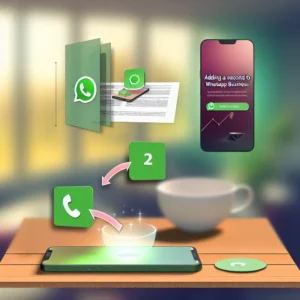In the fast-paced world of e-commerce, you face numerous challenges every day. Expectations for customer service are rising, and ensuring quick, effective responses can seem overwhelming. Furthermore, it becomes crucial to highlight your brand through superior interaction as competition intensifies. This is where chatbots come into play, revolutionizing the way you interact with customers and optimize processes.
By implementing chatbots, you not only gain efficiency but also a personal touch that consumers increasingly demand. These automated services provide round-the-clock support and handle inquiries at any time, while your human agents can focus on more complex issues. The future of e-commerce depends on leveraging technologies that foster customer loyalty and satisfaction — all while optimizing operational costs. Leveraging technologies that optimize your communication channels is critical.
As you navigate this environment, understanding how to effectively use chatbots can significantly boost your competitiveness. This article covers the transformative role of chatbots in e-commerce and offers insights into key features, best practices, and tools to improve your online business.
Understanding Chatbots for E-commerce: The Future of Automated Service
“Implementing a chatbot has changed the game for our customer interaction.” – Jane Doe, E-ShopPro
Chatbots in e-commerce symbolize a fundamental shift in how you interact with your customers. They enhance the customer experience and ensure that inquiries are quickly addressed around the clock thanks to these tools. With the evolution of e-commerce solutions, integrating chatbots is crucial to stay competitive in today’s dynamic market. The right tools can help boost your service quality.
The primary task of your chatbot is to optimize automated services to make transactions smoother and improve communication. Powered by artificial intelligence, these bots understand customer questions and respond by seamlessly guiding them through the purchase process. They not only reduce your customer service teams’ workload but also increase conversion rates by providing immediate support.
Imagine the fictional company E-ShopPro implementing a chatbot system. Within three months, they recorded a 30% increase in page interactions and a 25% rise in conversion rates, while customer service response times were cut by 50%. Such figures clearly demonstrate the potential impact of chatbot implementation on your e-commerce operations.
Moreover, effective chatbot implementation allows you as an e-commerce owner to customize solutions tailored to your unique needs. By selecting suitable tools, you create chatbots that resonate with your brand voice and offer personalized interactions. This approach leads to improved customer satisfaction and loyalty, which are crucial in modern e-commerce.
Chatbots can also analyze customer data to provide insights into buying behavior, enabling you to adjust marketing strategies effectively. Such automation not only streamlines operations but also significantly contributes to data-driven decision-making. For example, TechGadgets saw a 20% increase in revenue within six months after deploying their chatbot to analyze customer interactions.
Chatbots vs. Traditional Customer Service: Direct Comparison
“The reduction in response times since integrating chatbots is astounding — our customers are much more satisfied!” – John Smith, FashionFinders
When it comes to customer service, chatbots differ significantly from traditional methods. Conventional service involves long wait times and multiple contact points, whereas chatbots provide instant responses. Imagine a scenario where FashionFinders’ customers experience a 40% reduction in inquiry response times simply because chatbots were implemented. This shows how adopting automation can lead to efficient customer service.
Additionally, chatbots handle multiple inquiries simultaneously, drastically improving operational capacity. In contrast, traditional customer service agents can only manage a limited number of requests at once. By deploying chatbots like those used by CleanTech Solutions, which reported a 35% reduction in customer service workflows, you enable your team to focus on complex problem-solving.
Key Features to Look for in E-commerce Chatbot Tools
“Integrating AI into our chatbot led to a 50% reduction in misunderstandings.” – Angela Rossi, GourmetGrocer
When choosing a chatbot for your e-commerce needs, it is crucial to evaluate key features that align with your business goals. A high-quality e-commerce chatbot enhances interactions and optimizes processes. You need to understand these core functions to make informed decisions.
- User-Friendly Interface: A user-friendly interface is essential for both customers and staff. An intuitive design simplifies navigation, reducing frustration and ensuring smooth interactions.
- Natural Language Processing (NLP): NLP is fundamental for understanding user queries conversationally.
- Integrations with E-commerce Platforms: Your chatbot should integrate seamlessly with platforms like Shopify, WooCommerce, or Magento.
- Automated Service Capabilities: Tools that handle routine tasks enhance service efficiency.
- Analytics and Reporting: Analytics capabilities allow you to track performance and measure user engagement.
10 Best Chatbot Tools for E-commerce You Should Know
“Using chatbots has drastically changed our customer retention rates.” – Lucy Chen, RetailX
Chatbots have revolutionized customer service in e-commerce. Below are ten essential tools every e-commerce owner should consider:
1. WhatsApp Chatbot
WhatsApp Chatbot excels in engaging customers on a widely-used platform, addressing inquiries with automated service. RetailX utilized this chatbot and saw a 20% increase in customer engagements.
2. Shopify Chatbot
This integrated solution communicates directly with customers, answering common questions automatically. StoreMaster reported reduced response times by 40% using the Shopify Chatbot.
3. Tidio
Tidio combines live chat with automated responses for speedy service. E-Season applied Tidio, noting a 30% boost in customer follow-up interactions.
4. Drift
Drift focuses on lead generation for e-commerce through conversational marketing. SalesHub incorporated Drift and achieved a 25% increase in qualified leads.
5. Landbot
Landbot’s user-friendly design allows non-technical users to craft engaging conversations. BrightFuture improved user feedback collection efforts by 30% with Landbot.
6. ManyChat
ManyChat specializes in social media, automating product recommendations. FashionFiesta reported a 20% rise in online orders through this tool.
7. MobileMonkey
MobileMonkey enhances customer service through various automated tasks, improving retention rates by 15% at DigitalZone.
8. Chatfuel
Chatfuel requires no coding, helping businesses manage inquiries effectively. ToyLand saw a 40% decrease in response times thanks to Chatfuel’s easy setup.
9. Intercom
Intercom combines chatbot solutions with proactive engagement strategies. This approach led TechTribe to a 30% increase in customer interactions.
10. Zendesk Chat
Zendesk integrates well with existing support solutions, helping CraftWorks resolve customer issues quickly, enhancing service experience significantly.
Step-by-Step Guide to Implementing a Chatbot for Your E-commerce Store
“With the right approach, integrating a chatbot can deliver excellent results in customer service.” – Mark Taylor, ABC Retail
Integrating a chatbot into your e-commerce strategy is crucial for improving customer interactions and boosting sales. Below is a guide with steps you should follow.
- Step 1: Define Your Objectives: Clearly outline what you want your chatbot to achieve: whether for customer support or marketing.
- Step 2: Choose the Right Platform: Select e-commerce tools that support straightforward chatbot deployment.
- Step 3: Design Conversational Flows: Utilize user personality mapping to create tailored interactions.
- Step 4: Implement Artificial Intelligence: Integrate AI to enhance efficiency.
- Step 5: Test and Optimize: Thorough testing is essential.
- Step 6: Promote Your Chatbot: Employ strategies such as email campaigns and social media.
- Step 7: Monitor Performance: Utilize analytics to gauge effectiveness.
Enhancing Customer Experience with Chatbots: Best Practices and Strategies
“We have learned that addressing customer issues can greatly increase satisfaction.” – Sarah Wills, GroceryBuddy
To maximize your chatbot’s benefits, it is important to follow best practices. Addressing customer issues improves satisfaction.
- Understanding Customer Pain Points: Analyze common queries and tailor your chatbot to address these directly.
- Leveraging User-Friendly Interfaces: A well-designed chatbot should be easy to use.
- Personalization for Loyalty: Utilize customer data to provide tailored recommendations.
- Incorporating Automated Service Options: Automating routine tasks frees time for complex queries.
- Continuous Improvement: Regularly update your chatbot based on user feedback.
Measuring Success: Key Metrics for Evaluating Your E-commerce Chatbot
“Tracking user engagements was crucial to evaluate our chatbot’s effectiveness.” – Daniel Ross, ABC Marketplace
Setting metrics is crucial to evaluate how effectively your chatbot meets customer needs.
- User Engagement Rates: Track how many users engage with the chatbot.
- Conversion Rates: Measure the percentage of users completing desirable actions after interacting with the chatbot.
- Customer Satisfaction Ratings: Implement feedback forms post-chat to gain insight into customer experiences.
- Resolution Rates: Track the percentage of inquiries resolved without human intervention.
- Average Response Time: Monitor the average time the chatbot takes to respond.
Common Challenges When Implementing Chatbots and How to Overcome Them
“Overcoming the challenges of chatbot implementation requires careful strategy and planning.” – Lisa Green, FreshSales
Although chatbots optimize processes, challenges can arise during deployment.
- Integration Issues: Selecting a chatbot with flexible integration options eases compatibility with existing systems.
- Inadequate Training: To address training challenges, gather historical data for your chatbot to learn from.
- User Resistance: Many customers prefer human connections; ensuring smooth transitions to human agents can enhance trust.
- Maintaining Conversation Flow: Using conversational design principles ensures users remain engaged.
- Performance Assessment Complexity: Utilize analytic tools for continuous assessment of your chatbot.
The Future of Chatbots in E-commerce: Trends to Watch
“The integration of AI in e-commerce chatbots is the next big step for personalized shopping experiences.” – Alex Martin, SuccessNet
The future of chatbots in e-commerce is promising, with emerging trends set to enhance customer experience. Continuous developm









